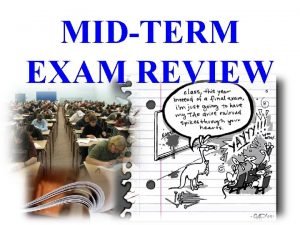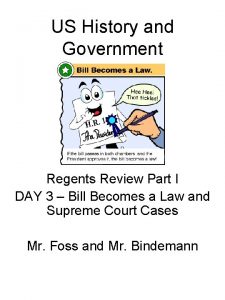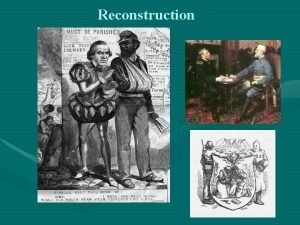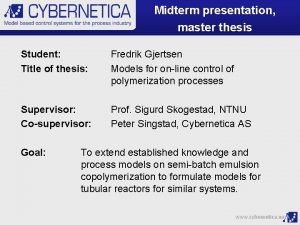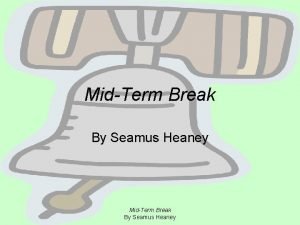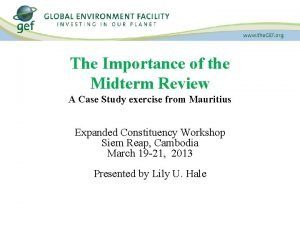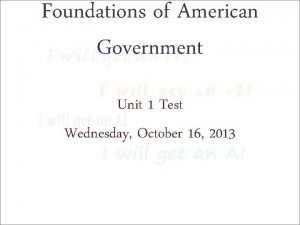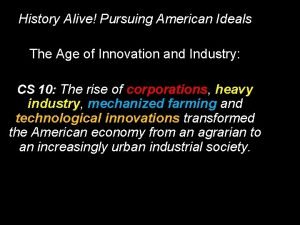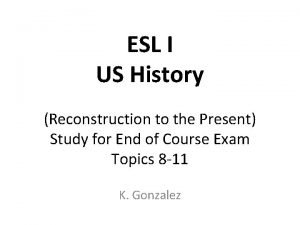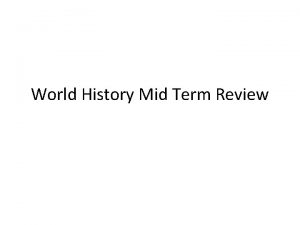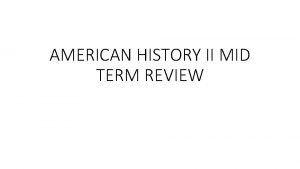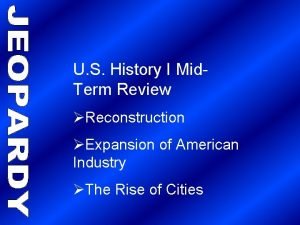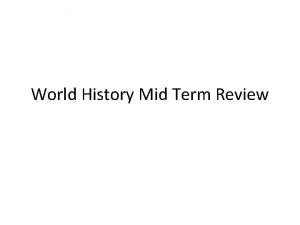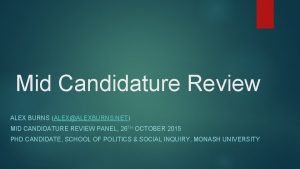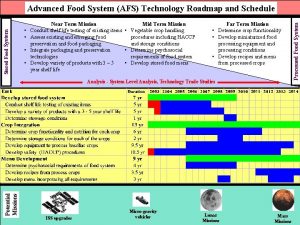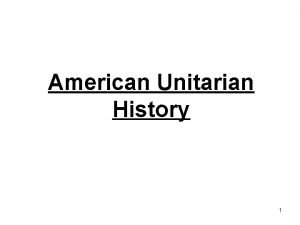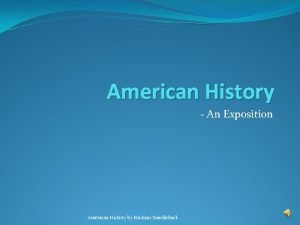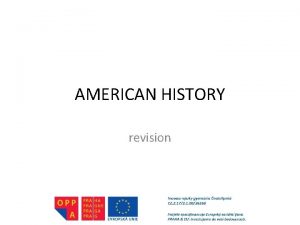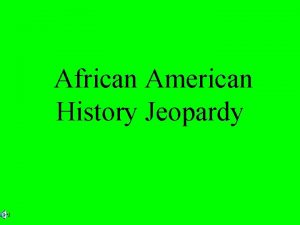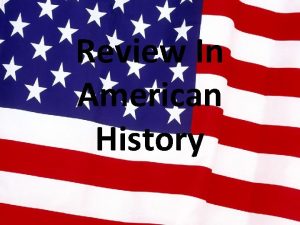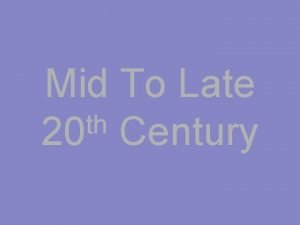AMERICAN HISTORY II MID TERM REVIEW MID TERM






















- Slides: 22

AMERICAN HISTORY II MID TERM REVIEW

MID TERM REVIEW 1. Few restrictions were placed on immigration to the United States in the late 19 th century primarily because immigrants: (A) would work for low wages (B) provided a rich source of investment capital (C) would add to the diversity of the population (D) faced little opposition from citizens

2. The Homestead Act and grants of land to railroads were used to: (A) raise money to finance the federal government (B) limit the influence of monopolies and trusts (C) support the development of state universities (D) encourage settlement of the West

3. In the late 1800 s, which concept was used to justify the accumulation of great wealth and economic power? (A) Manifest Destiny (B) self-determination (C) Social Darwinism (D) conspicuous consumption

4. During the late 19 th century, businesses tried to maximize profits by: (A) eliminating tariffs (B) supporting labor unions (C) resisting laissez-faire policies (D) creating monopolies

5. A major cause of antagonism toward the “new immigrants” who came to the United States after 1880 was the belief that they: (A) were better educated than native-born Americans (B) had a higher standard of living than most Americans (C) adapted easily to American culture (D) competed with Americans for jobs as unskilled laborers

6. During the late 1800 s, the principles of Social Darwinism and laissez -faire economics were most closely associated with the interests of: (A) farmers (B) coal miners (C) organizers of labor unions (D) owners of big businesses

7. Congress passed the Interstate Commerce Act (1887) and the Sherman Antitrust Act (1890) in response to: (A) foreign influences on the United States economy (B) public demand for better roads (C) monopolistic practices that were harmful to small businesses (D) the failure of federal banks to provide loans to individuals

8. In the 1890 s, calls for limiting immigration were largely the result of: (A) nativist reactions toward southern and eastern Europeans (B) a desire to achieve cultural pluralism (C) the influence of industrialists (D) the adoption of a constitutional amendment

9. Read each of the following developments and respond to question 15 below: • Settlement of the Great Plains • Creation of standard time zones • Establishment of the first federal regulatory agency • Introduction of new methods of business management and finance These developments in the late 19 th century show the importance of: (A) railroads on the development of the United States (B) agrarian reformers in western states (C) the labor union movement on the nation (D) the oil industry in increasing American power in the world

10. During the 1870 s, the Granger movement attracted the support of many western farmers because it proposed that: (A) the money supply should be deflated by removing paper currency from circulation (B) shipping rates and grain storage fees charged by railroads should be regulated (C) immigrants should be given land on the Great Plains (D) the government should control the development of resources in the West

11. One factor that motivated imperialism during the late 19 th and early 20 th centuries was the: (A) Development of closer political ties with European nations (B) Closing of China to all foreign trade (C) Support of international peacekeeping operations (D) Acquisition of new markets and sources of raw materials

12. The Age of Imperialism was marked by • (A) a decrease in the number of naval ships • (B) the expansion of American political influence • (C) an increased interest in the plight of day laborers • (D) the reduction of military intervention in other countries

13. President Taft’s policy of dollar diplomacy resulted in: • (A) restrictions on corporations • (B) a reduction in the value of money • (C) American investments in Latin America • (D) Less American influence in the Western Hemisphere

14. Favoring honorable diplomacy but still resorting to military intervention upon occasion would be an example of: • (A) moral diplomacy • (B) big stick diplomacy • (C) dollar diplomacy • (D) the Roosevelt Corollary •

15. Among President Wilson’s Fourteen Points was a proposal to • (A) Disarm all major powers • (B) Form a League of Nations • (C) Create an alliance with Germany • (D) Make Great Britain repay their war debt

16. Congress voted to declare war on Germany for several reasons. Which of these did NOT contribute to Congress’s decision to declare war on Germany? • (A) The Zimmerman note • (B) Shared German ancestry • (C) The sinking of the Lusitania • (D) Germany’s submarine warfare

• 17. One of Woodrow Wilson’s most important goals after World War I was to establish a League of Nations. What was the main job of the League supposed to be? • (A) Make it unnecessary for the United States to involve itself in international disputes • (B) Provide a way for countries to resolve disputes between them without going to war • (C) Maintain the world economic system so that colonies would no longer be necessary • (D) Hold the nations of Europe responsible for the death and destruction of World War I •

18. “The most stringent protection of free speech would not protect a man in falsely shouting fire in a theater and causing a panic” • - Justice Oliver Wendell Holmes • • • Which interpretation of the Bill of Rights does this statement illustrate? (A)The needs of the government are more important than civil liberties (B) Constitutional protections of liberty are not absolute (C) The Supreme Court can eliminate freedoms listed in the Bill of Rights (D) The Bill of Rights does not safeguard individual liberties

19. The Schenck vs. US Supreme Court Case was a result of Schenck’s violated of which act? • (A) Sedition Act • (B) Espionage Act • (C) Monroe Doctrine • (D) Civil Liberties Act

20. American imperialism, specifically American involvement in the Philippines, was in violation of which document? • (A)Open Door Policy • (B)Treaty of Versailles • (C)Roosevelt Corollary • (D)Monroe Doctrine

AMERICAN HISTORY II • 1. Gilded Age and Industrialization • 2. Progressive Era • 3. Imperialism and World War I • 4. 1920 s, Great Depression and the New Deal
 Midterm for one for short
Midterm for one for short American history regents review
American history regents review Reconstruction refers to the period in which
Reconstruction refers to the period in which Mid year budget review
Mid year budget review Mid year budget review
Mid year budget review Midterm presentation
Midterm presentation Mid term break seamus heaney quotes
Mid term break seamus heaney quotes Euro btp futures
Euro btp futures Importance of mid term evaluation
Importance of mid term evaluation Effectiveness of the title mid term break
Effectiveness of the title mid term break College english midterm exam
College english midterm exam Seamus heaney midterm break
Seamus heaney midterm break Mid term break poem analysis
Mid term break poem analysis Foundations of american government unit test
Foundations of american government unit test Chapter review motion part a vocabulary review answer key
Chapter review motion part a vocabulary review answer key Ap gov review final exam review
Ap gov review final exam review Nader amin-salehi
Nader amin-salehi What is inclusion and exclusion criteria
What is inclusion and exclusion criteria Narrative review vs systematic review
Narrative review vs systematic review British army history jeopardy
British army history jeopardy Zone of situ accretion
Zone of situ accretion History alive pursuing american ideals
History alive pursuing american ideals Esl american history
Esl american history
